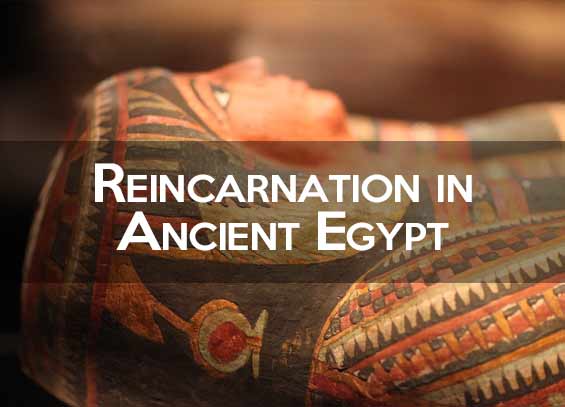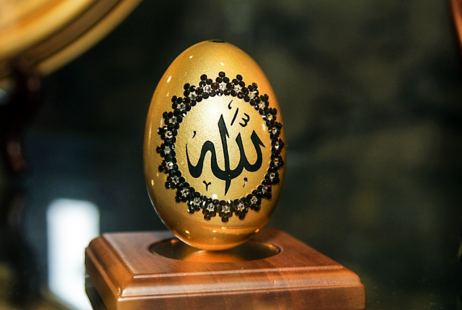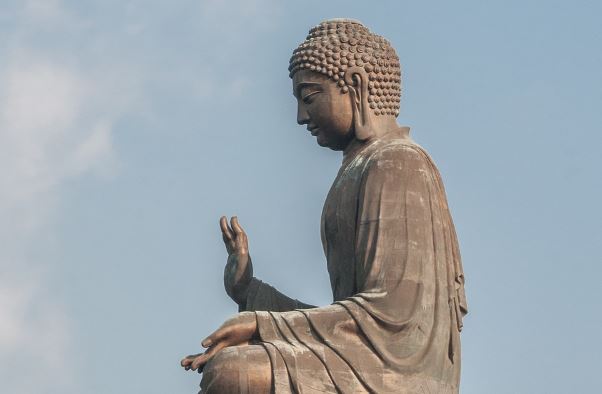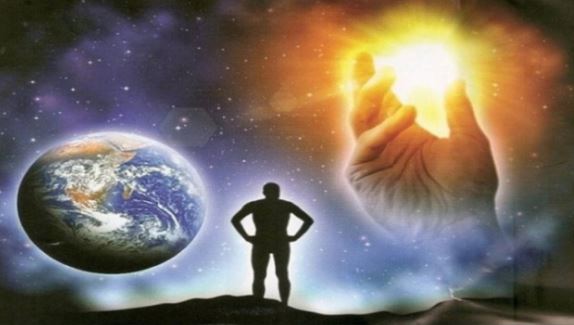We know the Ancient Egyptians believed in the release of the soul after the transition to death, but why were they so preoccupied with mummifying and preserving the bodies of the dead in monumental tombs? In this article, we will discuss reincarnation in Ancient Egypt and what their views were on life after death.
This issue opens a fascinating review of some major concepts that ancient Egyptians held regarding reincarnation in Ancient Egypt, the soul and life after death.
Although many cultures have had religious doctrines and beliefs about immortality, the earliest religious doctrine about life after death seems to be that formulated by the Egyptians of the Predynastic and Archaic eras. Religious belief in the afterlife was fundamental in establishing the architecture, arts, and industries of later dynastic Egyptian cultures. It inspired the construction of enormous tombs of monumental dimensions, such as the pyramids and the splendid mortuary temples like that of Queen Hatshepsut.

The tombs of the feudal nobles became warehouses in which to store all sorts of artefacts and the elaborate designs on their walls reveal the life and customs of that period in Ancient Egypt. The construction of the pyramids was an evolution of the mastaba, a deck with flat clay bricks in an oblong shape, on a sepulcher in which was placed the body of the deceased.
Religion and Reincarnation in Ancient Egypt
In the ancient Egyptian religion, it was believed that what survived was not simply a kind of intangible or insubstantial being, but the body itself was reborn in all its physical substance, soul, or spirit, which re-entered a resurrected physical body. The surviving personality retained all the sensations of its earthly existence, as long as it passed the judgment of the gods, the weighing of the soul, a process which we call psychostasia. In such a state, the deceased experienced no adversity or suffering of any kind and the sensations perceived were almost ecstatic, an increase of the enjoyments of this life.
The Ba
The Egyptians generally represented the soul of man as a bird with a head of human traits called Ba. In the illustrations of the tombs, this bird was seen fluttering from the mouth at the time of death and was sometimes depicted as a bird with a human head. As a bird, it associated itself with the breath and the wind, a common association of the soul among people in ancient times. Just as the soul (Ba) entered the physical body at birth, it left it at the moment of death. However, it was thought that the physical body was again infused with Ba after death and then lived in the sky.
The Ka
There was another figure accompanying Ba that we now interpret from hieroglyphic and demotic writing as Ka. This was a miniature replica of the deceased. The exact meaning of this figure has been a subject of great debate among Egyptologists. However, it is generally understood that it is a symbol of being, the inner being, the individual’s consciousness. Being considered different from the soul, it was the personal guide, the personality of the individual.
In the chapel annexed to the sepulchral chamber of the tomb, the family of the deceased would leave portions of food for him, as well as his treasured possessions, such as his weapons, musical instruments and furniture. The deceased would use them in a very real physical sense after death. If this practice seems elementary and primitive, we must realize that even today in civilized countries, many religions have similar ideas about life after death, imagining that heaven consists of all that can be pleasurable in this life. Some people today consider that the deceased lives in an almost material realm in which he or she uses things very similar to those they used on earth and that they will with interact with other humans and animals in a similar way as we do in this life.
Osiris
For the ancient Egyptians, the location of the other worlds was where Osiris lived. Osiris, the most revered of the gods, was killed by his brother Seth. The body of Osiris was dismembered and thrown to the torrents along the Nile. His wife and sister, Isis, recovered the body parts of Osiris and united them, securing his resurrection for one night during which he conceived his son Horus. Osiris rose again and moved into an eternal existence in the other world.
This is the first evidence of the doctrine of the resurrection in Egypt. The entire history of Osiris’ death, resurrection, and immortality became the basis of the teachings of the schools of mysteries and was regularly portrayed as a religious drama, the first depiction of passion. The theme of the original resurrection of Osiris largely influenced all subsequent concepts of the resurrection, including that of Christianity.

Why was the conservation of the bodies so important in Ancient Egypt?
The Book of the Dead is a compilation of liturgical prayers and magical rites, painted and inscribed on scrolls of papyrus and on the walls of the tombs in Egypt. These texts state that if the body is to perish, then the soul can be accommodated in one of the statues with the image of the deceased so, as a result, we can find large domes with representations of the pharaoh in front of his mortuary temple. Inside the tombs there were also beautifully sculpted statues of nobles, viziers and other officers who had served the pharaoh in life, not only to ensure that he would be served in the afterlife, but also to secure a place for these officers after death.
It was thought that the soul of the pharaoh would return at regular intervals to the mummified body that was in the tomb when it reincarnated from the other world during a brief visit. If the body had disintegrated, then it would temporarily occupy one of the sculptured statues with his image.
In the other world, the surviving personalities sat on thrones in the circumpolar region or north of the sky. That was where the upper deities lived. In the paintings on the tomb walls or in the decorations inside the sarcophagi, the souls in the other world were also represented as birds on the branches of a celestial tree. It was believed that the stars were the souls of the dead who swayed on the tree of the heavens. There, they would be surrounded by the most eminent deceased, the kings or pharaohs, who, in the other world, led the life of royalty and served as judges. The similarities to the Judeo–Christian–Islamic concept of life after death are not a coincidence. In spite of their later development, the Egyptian origins of these concepts are clear.
Modern Egyptologists have translated sentences from the Book of the Dead that say that the deceased could leave the tomb, not only at the night, “when all the spirits are free to prowl the earth“, but during the day in whatever form they chose. The deceased could reincarnate in the form of animals, birds, and flowers. It is interesting to note that in many of the sarcophagi are painted repeated small sets of stairs. They were intended to help the soul of the deceased ascend to the sky and sometimes small stairs of blue or gray earthenware were placed, as symbols, on the mummified figures.

Among the funeral accessories were the so-called ushabti or responding gods. They were small sculpted figures representing a special category of assistants of the deceased in the other world who performed for the pharaoh all the unpleasant tasks that he had to execute in the present world. This made the pharaoh free to enjoy his new and exalted existence.
The life after death of the Egyptians consisted of two great divisions, the “spirit of light” and “the field of Reeds.” The latter was the most common and referred to a fertile area in the other world where agriculture was easily carried out resulting in abundant crops and a production that far exceeded anyone on earth. Agriculture, the cultivation of the land, was the greatest enterprise and wealth for both the free man and the Egyptian nobleman.
There was nothing more gratifying than to own a piece of fertile land. The Egyptians conceived this as the home in the other world of those who were found to have been honest, upright, and morally qualified after their souls were weighed against the pen of Truth.
The following passage comes from the Book of the Dead: “The man who dies follows Osiris in the kingdom of the dead, the gates of the other world open before him, he is given barley and corn in the field of Aahlu [in Heaven] and he is treated like the gods that dwell there”.
The soul of the deceased could travel with the sun from sunset to dawn on subsequent journeys through the heavens. The sun was represented as a solar boat that sailed through the heavens, which was engraved on many of the temple walls and in the tombs like a boat carrying the solar disc across the sky. The souls of mortals of lower rank than the pharaoh also could travel in similar ships. It is important to note that at dawn, the souls were free to return to their former homes, apparently to a great extent to the concern of the living. In their houses, they could sit in the shade of their garden and enjoy the “breeze of the north wind”.
The Apis Bulls
The worship of animals dates back to the early feudal period of Egypt. However, most Egyptologists do not think this is indicative of a decline in Egyptian religion. Animals were revered for a considerable period because they symbolized some virtue or power that people revered. Animals and birds were strong, swift, virile, dexterous, and beautiful. In these living creatures, humans saw in an objective way the qualities they sought for themselves, in this world or in the afterlife. For the Egyptians, it was a religious duty to respect animals, not necessarily for themselves, but for those qualities exhibited by animals.

It was later believed, however, that these animals harbored spirits of divine and other beings. The Apis bull was worshiped in Memphis. It was believed to be the reincarnation of the god Osiris and the second life of Ptah. These bulls were selected in a special way by the priests. Only those who had a natural white triangle on the forehead were chosen. These bulls were embalmed and buried with great ceremonies in huge stone sarcophagi. One of the largest necropoleis is the Serapeum of Saqqara, the site of ancient Memphis, one of the first urban areas of Egypt.
The Bakh bull was revered in a similar way, it was black and had fame for its strength, its violence, and its bellicosity. It was believed that this bull was the reincarnation of Mentu, a warrior god from the small town of Hermonthis about 16 kilometers from Thebes, the ancient capital of Egypt.
Transmigration and Reincarnation in Egypt
According to the Egyptian religion, the popular belief was that the deceased could take on different shapes and dimensions at will. This is the doctrine of transmigration that is often confused with the concept of reincarnation. Transmigration is the belief that the human soul can enter into animal forms instead of passing only to new human bodies. The belief in the transmigration of the Egyptians must be distinguished from the later beliefs of the Vedic teachings of India. According to the Egyptian concept, the soul had not been made to reside in animal forms (as in the Vedic teachings) as atonement for its mortal sins. Read also: Do Buddhist believe in Reincarnation?
If an informal analysis of the Egyptian religion is done, it would appear that the ancient Egyptians were intoxicated with the belief of life after death and that their earthly existence was a joyful anticipation for the afterlife. Their respect for a supreme deity and a series of minor entities can only place them in the category of extremely religious people. However, during a period of its history, a spirit of skepticism and pessimism was introduced. Modern historians call this period the “age of pessimism“.

Apparently, the Egyptians somehow doubted the claims of the higher administratives, for after all, there was no tangible evidence of the existence of a life after death. Even the pyramids that have been standing for centuries, throughout the feudal age and the imperial age, began to decline and ceased to be the glorious dwellings of the souls from those who departed. Many tombs had already been sacked and remained an unconvincing testimony to the claims of the immortality of their dead. The inscription on a papyrus expresses with lamentation: “Death plucks a man from his house and throws him into the hills. He will never return to contemplate the sun.”
Then, during the funeral celebration in this Age of Pessimism,
“He who dwells in the tomb does not perceive your lamentations.
Therefore, with joyful serenity celebrate a holiday
And do not rest during that day,
For no one takes their property with them,
And no one who has gone from here returns”
Despite this pessimism about life after death, beliefs about transmigration and reincarnation prevailed. Herodotus, the Greek historian who spent some time in Egypt, wrote: “The Egyptians were the first to hold that the soul of man is immortal and that when the body dies, it enters other animals, constantly reborn to existence, That once it has passed through different kinds of terrestrial, marine and aerial beings, it enters again to the body of a man and that this rotation takes place in a lapse of three thousand years “.
It should be remembered that it was thought that after death the soul incarnated in ascending order in successive stages, through inferior forms, and finally after three thousand years to function again in a human form. There are other definitive indications of a doctrine of reincarnation. The ritualistic names of the first two kings of the nineteenth dynasty seem to confirm that they would reincarnate. The name of Amenemhat I meant: “he who repeats births.”
The name of Senusret I meant: “He whose births live.” In addition, in the nineteenth dynasty, the name Ka of Setekhy I was: “repeater of births.” The 27th dynasty, during the imperial period, left records indicating that “reincarnation affects ordinary people”. The Book of the Dead contains a dozen chapters with spells (magic rites) to recite to help the deceased reincarnate. Chapter twenty presents spells to “make them exist” in living forms again.
Pythagoras, who taught in the schools of the mysteries of Egypt, is usually charged with inventing the concept of reincarnation. This doctrine, however, was already ancient long before the time of Pythagoras. Herodotus says that Pythagoras “took this view as if it were his own.” At least Pythagoras gave it relevance and freed it from many of its elements of superstition, giving it a more transcendent meaning.







1 comment
Awesome information